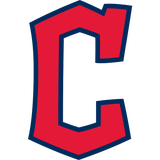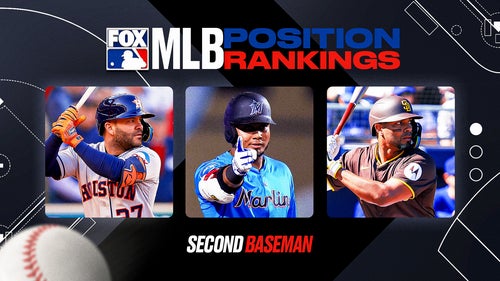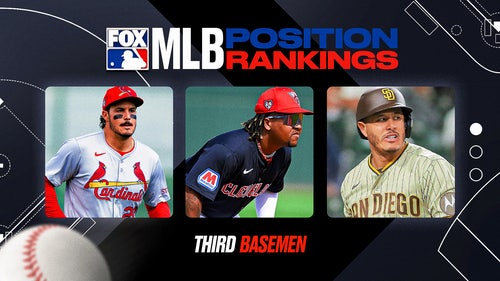
MLB: Forgotten Stars of the 1990s
Mandatory Credit: Ken Blaze-USA TODAY Sports
With many fans paying attention to current players or those of several decades past, it’s only fair to provide an opportunity to remember some forgotten 1990s baseball stars.
Baseball is more prone to nostalgia than seemingly any other sport. The quality of play is as high as it’s ever been, yet we as fans always seem to harken back to the good old days. Somewhere in between is the lost decade of the 1990s.
There are many potential reasons why the 1990s seems to be an afterthought in baseball lore. It’s too recent to be longed for by older fans, yet too long ago to be instantly recalled by younger fans. The steroid era. The strike. Bud Selig’s reign of terror.
This is unfortunate, because the 90s saw some truly excellent players. With the recent Hall of Fame voting, many of these superstars returned to the foreground this past month, including Barry Bonds, Roger Clemens, Mike Mussina, Curt Schilling, Jeff Bagwell, Edgar Martinez, Larry Walker, Fred McGriff and Ivan Rodriguez. Many of these players don’t get the recognition they deserve, and the players a tier below them are downright forgotten.
The following group of players don’t have a common bond aside from being very good players that time happened to forget. Each position is represented, including a pitcher from each side. None of these players lasted more than a year on the Hall of Fame ballot, but all of them deserve to have their careers acknowledged every so often. Join us as we go on a journey through baseball’s forgotten decade.
C – Terry Steinbach – Athletics/Twins
Aside from Ivan Rodriguez, Terry Steinbach caught more games than anyone in the 1990s. Only one of his three all-star appearances with the Oakland Athletics came in this decade, but he was a steady force throughout. From 1991-96, Steinbach’s batting average stayed within a range of .272-.285, and he played solid defense throughout. His best season came in 1996, when he hit 35 home runs with 100 RBI, far surpassing his previous career high marks. Steinbach received his only MVP vote that season, and he was out of baseball following three seasons with the Twins from 1997-99. He received one Hall of Fame vote in 2005.
1B – Andres Galarraga – Expos/Cardinals/Rockies/Braves
Andres Galarraga had a fascinating career. He came up with the Montreal Expos in the mid-80s and quickly became a solid first baseman. After a rough start to the 1990s, Galarraga flourished in the thin Denver air as he became one of the original Colorado Rockies in 1993. He led all of baseball with a .370 batting average that season, and averaged 44 home runs and 145 RBI between 1996-97. The Big Cat proved that he was not just a product of Coors Field, turning in perhaps his best environment-adjusted offensive season in 1998 with the Atlanta Braves at age 37, hitting for a .305 batting average and .991 OPS to go with 44 home runs and 121 RBI.
The decade ended on a tragic note for Galarraga, as he had developed a non-Hodgkin’s lymphoma and missed the 1999 season receiving treatment. Galarraga made a triumphant return in 2000, starting in the all-star game and winning comeback player of the year. He ended his career with 399 home runs and a story of perseverance that should not be forgotten.
2B – Carlos Baerga – Indians/Mets/Padres
Carlos Baerga seemed destined to become a superstar. He came up with the Cleveland Indians in 1990 at the age of 21, and made the all-star team three times by the age of 26. He had a pair of silver slugger awards by that time to go along with two 200-hit seasons. Baerga made the final out of the 1995 World Series as the Indians lost to the Braves, and he would essentially never be the same player again. In his first six seasons Baerga had a .305 batting average and 115 OPS+ for a 20.9 bWAR total. For the rest of his career, Baerga struggled to the tune of an 80 OPS+ and -1.3 bWAR. From 1996-2005, including two years out of the majors altogether, Baerga was below replacement level. He had a great start to his career, but Baerga just didn’t end up having the career Indians fans may have hoped for.
3B – Ken Caminiti – Astros/Padres
Ken Caminiti has seemingly disappeared into the baseball annals, but he should serve as a cautionary tale to all up and coming major leaguers. Caminiti came up with the Houston Astros in 1987 and made his name with his glove and massive throwing arm. He was traded to the San Diego Padres in a monster 12-player deal following the 1994 season. In the following four seasons, Caminiti would win three gold gloves and the 1996 MVP award on the heels of a campaign in which he hit .326 with 40 home runs and 130 RBI.
After his career, Caminiti admitted to Sports Illustrated that he used steroids during his MVP campaign and in subsequent seasons. He struggled with alcohol and substance abuse throughout his career. Tragically, Caminiti died on October 10, 2004 of a cocaine and heroine overdose at the age of 41.
SS – Jay Bell – Pirates/Royals/Diamondbacks
The player who made the most appearances, started the most games, and played the most innings at shortstop in the 1990s wasn’t Barry Larkin or Omar Vizquel. It was Jay Bell.
Bell came up with the Indians at 20 in 1986 and was traded to the Pittsburgh Pirates prior to the 1989 season as an infamous player to be named later. For the entirety of his career, Bell was fairly unremarkable – he had a career 101 OPS+, and his defensive metrics scored close to average. In the 1990s, however, he received MVP votes three times, made two all-star teams, and won a gold glove and silver slugger award. His best offensive season came in 1999 with the Arizona Diamondbacks after shifting to second base, posting career highs in slugging percentage (.557), OPS (.931), home runs (38), RBI (112) and runs scored (132).
LF – Greg Vaughn – Brewers/Padres/Reds
Lost among the ranks of 1990s sluggers is Greg Vaughn, who quietly hit 287 home runs in the decade. From 1996-99, Vaughn had three 40-homer seasons, including 50 in 1998. He was, of course, completely overshadowed by the McGwire/Sosa home run chase, but managed consecutive fourth-place finishes in the MVP voting in 1998 and 1999. Vaughn was unable to carry this momentum into the new century, however, as Tampa Bay’s attempt to contend with a lineup of aging sluggers such as Fred McGriff, Vinny Castilla, Jose Canseco and Vaughn failed miserably.
CF – Ray Lankford – Cardinals
More from Call to the Pen
The 1990s had several underappreciated center fielders, including Devon White and Marquis Grissom. Ray Lankford earns the spot here, though, with his combination of power, speed, plate discipline and defense. Lankford took over center field in St. Louis for Willie McGee late in the 1990 season and patrolled the middle of the Busch Stadium outfield for much of the rest of the decade. He turned in five seasons of 20 home runs and 20 steals, including each year from 1995-98. Lankford quietly posted a .847 OPS (126 OPS+) for the 1990s. A signature moment came in 1994, as Lankford led off the season with a home run on a full count pitch from Jose Rijo. Lankford only made one all-star team, in 1997, but was a consistent force throughout his career.
RF – Jay Buhner – Mariners
Jay Buhner is one of the most popular Seattle Mariners in franchise history, and from 1995-97 averaged better than 40 home runs and 120 RBI. He was traded to the Mariners from the New York Yankees in 1988 for Ken Phelps, and his greatest claim to fame may be an episode of Seinfeld where Frank Costanza berates George Steinbrenner for trading Buhner. Phelps played just parts of two seasons for the Yankees, while Buhner went on to hit 307 home runs for the Mariners, behind only Ken Griffey, Jr. and Edgar Martinez in franchise history.
DH – Chili Davis – Angels/Twins/Royals/Yankees
Chili Davis was a steady producer as an outfielder in the 1980s and as a designated hitter in the 1990s. The native of Jamaica hit .281 with a sparkling .380 OBP in the 90s, averaging 27 home runs and 101 RBI per 162 games in the decade. He reached 30 homers just once, and 100 RBI once, never reaching 90 runs scored despite his on-base ability. Davis ended his career with 350 home runs and three World Series rings.
LHP – Chuck Finley – Angels
Mike Trout will overtake him during the 2017 season, but Chuck Finley is the Angels’ career leader in wins above replacement. Only Greg Maddux and Tom Glavine started more games than Finley in the 1990s, and Finley recorded the fifth-most strikeouts in the decade while issuing the second-most walks. He was a workhorse, averaging 214 innings pitched. Finley received only one Cy Young vote in his career, in 1990, but he was named to five all-star teams.
RHP – Kevin Appier – Royals/Athletics
Kevin Appier was a mainstay in the Kansas City Royals rotation for most of the 1990s. He began the decade finishing third in the Rookie of the Year race behind a 12-8 record and 2.76 ERA. He led the American League in ERA and fielding independent pitching in 1993, finishing third in the Cy Young race while picking up an MVP vote. He was named to just one all-star team, in 1995, but from 1990-97, Appier paced the Royals with a 103-74 record, 3.22 ERA and 1.215 WHIP while averaging 205 innings pitched per season. He went on to find post-peak success with the Angels, serving as a key cog in the rotation during the team’s 2002 championship run.
Some positions were deeper than others in the 1990s, so if your favorite player from the decade was left out, let us know in the comments.




